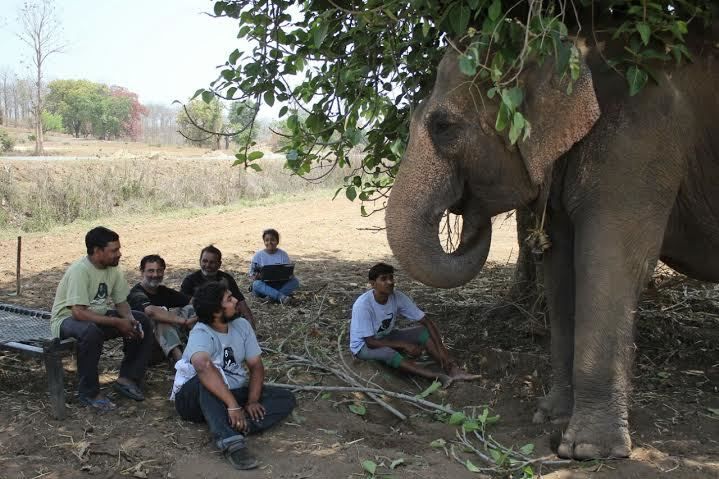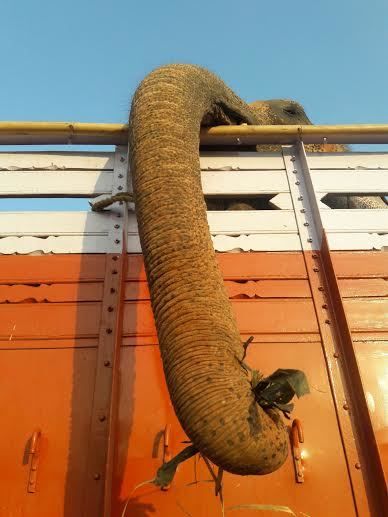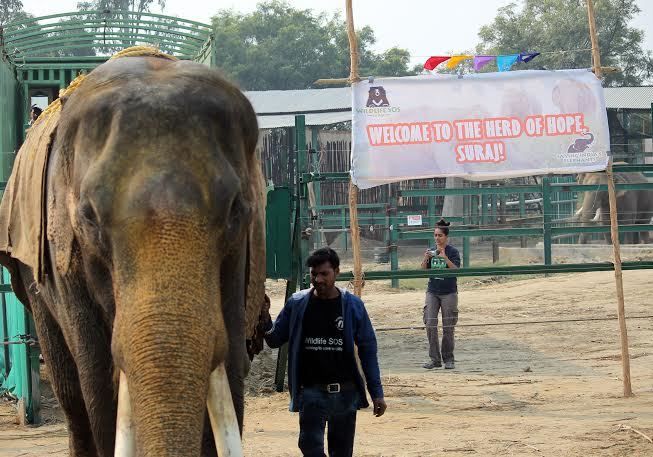Rescuing an elephant in need is always a cause for celebration. It is also a momentous task. When the Wildlife SOS Elephant Ambulance finally pulls into our sanctuary with its precious cargo, we can all finally breathe a sigh of relief and rest momentarily. And so can the elephant: his or her old life is over. What lies before them is something they may not have ever known: respect, love, care, open spaces. But as our supporters know, an elephant rescue can sometimes take more than a year to plan, coordinate, and carry out. It can be excruciating. Many wildlife supporters have left posts on our Facebook page like these: “What is taking so long?!” and “Can’t you just roll in like the cavalry and save this poor elephant now?” Their frustration is real, and it’s palpable — we feel it too. But rescuing a suffering elephant in India is extremely difficult and incredibly complicated.
Wildlife SOS has been involved in more than 30 attempted elephant rescues. Even the most successful of them had its share consternation, danger, and drama. Each has been unique and each has had its very own combination of challenges. The rescue of an elephant can generally be broken down into three stages: 1) the pre-rescue, 2) the rescue, and 3) the post-rescue. At any stage, issues can develop that obstruct, delay, or even paralyze and halt the rescue altogether.

Rhea and her rescue crew take a pit stop on the way to the rescue center.
Stage 1: The Pre-Rescue
Once we’ve decided to move forward with an elephant rescue — and believe us, the details of how we decide this could fill a whole other blog post — the first thing we must do is make sure our plans are strategically lined up with all the necessary permissions and paperwork. In fact, due diligence on the legal permits, court battles, and documentation makes up much of the pre-rescue stage. This includes getting the approval of various levels of government, from the Chief Wildlife Warden from the state where the elephant is located at the time as well as the Chief Wildlife Warden of the destination state where the rescue facility is located. In some cases, if an elephant is being confiscated by the authorities, we would need to also procure a court order to move ahead with the rescue. Getting this court order is also quite a complex procedure. A case in court is most often challenged by the elephant’s then-owner or custodian. Additionally, if said owner has any kind of documentation he could use to stake an ownership claim to the the elephant, things get even more complicated. Our lawyers then must engage in long court battles to examine the validity of every single document. In some cases, government bodies like the Animal Welfare Board of India are requested to intervene. Sometimes the court will request an independent veterinarian to carry out a health exam of the elephant and present the report in court.
In India, captive elephants are worth a lot of money and prestige to their owners. Those who possess elephants tend have the power, influence, and means to fight long, drawn-out legal battles. Therefore, court battles can rage on for several months or even years. And an elephant rescue can take on religious or political shades if the owner decides to draw the battle out, which means the outcome can be difficult to predict and vary from region to region. In case of anticipated hostility, we often send out advance undercover teams to document unsafe areas and help us draw up entry and escape routes.
Stage 2 – The Rescue
Coordination of the rescue stage requires extremely thorough planning and coordination with law enforcement agencies. First, we coordinate a security plan with the senior district administration officers, senior police officers, and Forest Department officers. Elephant rescues can be extremely dangerous and unsafe because large, unruly mobs can form quickly and become violent. These large mobs often outnumber the police force at the scene. Once the security plan is discussed and planned with the government agencies, we must then plan the timing with those agencies in conjunction with our own internal abilities (selecting, short-listing, and coordinating logistics such as support vehicles and rescue personnel to the rescue location). It can take several days to get our Elephant Ambulance and the rescue crew where they need to be. And the rescue crew list is not small: we need at least two to three experienced mahouts (or “elephant caretakers”) on hand to help load the elephant onto the truck and keep him or her calm (elephants can be confused or dismayed by mobs, and are not used to boarding trucks). We also need one or two experienced elephant veterinarians present to monitor the elephant’s health for the duration of the journey. And at least three experienced truck drivers have to be available who also can function as vehicle mechanics for the elephant truck. On top of this, additional support staff are necessary to get elephant fodder, hose down the elephant to keep him or her cool, and perform various other duties. Finally, we need a team leader to coordinate the entire operation and also one or two staff members to document every step of the journey and keep our communication team in the loop so we can monitor the journey and the safety of the team.

Sita waves her trunk and accepts a leafy treat from the Wildlife SOS Elephant Ambulance.
As mentioned, getting a 10,000-pound mammal (who may not know what is going on) safely onto a 20-ton truck is no small feat in and of itself — in fact, it is one of the most challenging aspects of any elephant rescue. And if a loud and unruly mob has formed, the elephant is certain to be agitated. The shifting of an uneasy elephant within a truck can cause a variety of serious problems, including harm to the elephant itself as well as serious structural damage to the vehicle.
Once these obstacles have been overcome and the Elephant Ambulance is on its way back to the sanctuary, new challenges arise: vehicle and tire repairs, wrangling elephant fodder and water on the fly, procuring food for our human rescue crews, and conducting successful pit stops to allow the elephant to stretch out and exercise. As a rule, most Indian roads have a generous sprinkling of potholes, and we’re often forced to drive through unsafe areas where our route back to the sanctuary has bandits and other hostiles. The support vehicles often must scope out the unsafe routes and guide the Elephant Ambulance safely through to minimize the dangers and risks.
Stage 3 – The Post-Rescue
Once we finally reach the Wildlife SOS Elephant Conservation and Care Center, our rescued elephant must be comfortably settled into a temporary safe housing area. This is followed by a gradual and planned introduction to other compatible elephants. We must do a variety of things to ensure that he or she is comfortable in the new surroundings — and this is no small task. Usually the process of acclimating an elephant to his or her new surroundings is done in a phased and gradual manner so as not to overwhelm the elephant. The process begins with giving the elephant treats like fruit and allowing him or her to rest and sleep on comfortable beds made from soft earth before introducing them to their new living quarters. Over time, he or she gets to meet other elephants, as appropriate, and is introduced to amenities such as the hydrotherapy pools.

Suraj arrives at the Wildlife SOS Elephant Conservation and Care Center.
But even then, we can’t rest easy: The fight for this elephant’s freedom is by no means over. Court battles often rage on for years while the elephant acclimates and finally settles into his or her new home. The previous owners may petition the courts and launch attacks, threats, and negative campaigns against us to reacquire custody.
The fight for the protection of India’s elephants is extremely difficult and an uphill task. Although it is a fight fraught with obstacles, it extremely worthwhile. Although they are still revered in India as gods, elephants are sadly also exploited and abused. And while there is serious work to be done in the trenches, many of the battles are just getting started in courtrooms and government offices across the nation. India’s elephants are in trouble. This is urgent. We know it. But to be effective in the long term, we must work within the system and keep our patience even as we scream for justice. Because the end result — safety for all of India’s elephants and protection of their fragile habitat and forestlands — is worth it. Wildlife SOS is in this fight for the long run.
